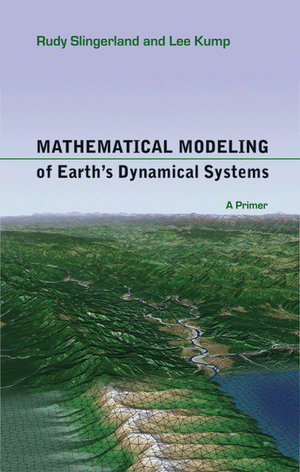Mathematical Modeling of Earth’s Dynamical Systems
Mathematical Modeling of Earth's Dynamical Systems

By: Slingerland, Rudy and Kump, Lee. Princeton University Press, 2011. ISBN: 978-0-691-14513-3
Princeton University Press
The new textbook: “Mathematical Modeling of Earth's Dynamical Systems: A Primer” by Slingerland and Kump helps earth scientists build essential skills to represent Earth surface processes with mathematical and computational models. The book aims at upper-level undergraduate students, graduate students, and scientists who want to learn how to abstract complex earth systems into sets of dynamic equations. It is clear that the authors do aim at an audience that is familiar with the principles of physics, chemistry, and geology, and expect some background in differential and integral calculus. But the authors stress that little prior modeling experience is needed to use this book; they want to instill a philosophy of science that values quantification as a way of gaining insight. That philosophy rings true. The authors step aspiring modelers systematically through quantitative problem solving process. Firstly, get the physical picture clear while recognizing domains of interest and key factors, then write down the mathematical laws, be aware of the restrictive assumptions, check your units and boundary conditions and lastly verify, validate and solve your model. Various relevant examples of processes and systems are provided with increasing complexity over the chapters. Slingerland and Kump offer problems over the entire Earth System Science domain in choosing groundwater flow, coastline evolution, sediment transport, radioactive decay, and carbon flux modeling problems as their rich set of examples. Every chapter has modeling assignments for eager modelers to try their newly acquired insight, or for teaching faculty to assign to their students.
